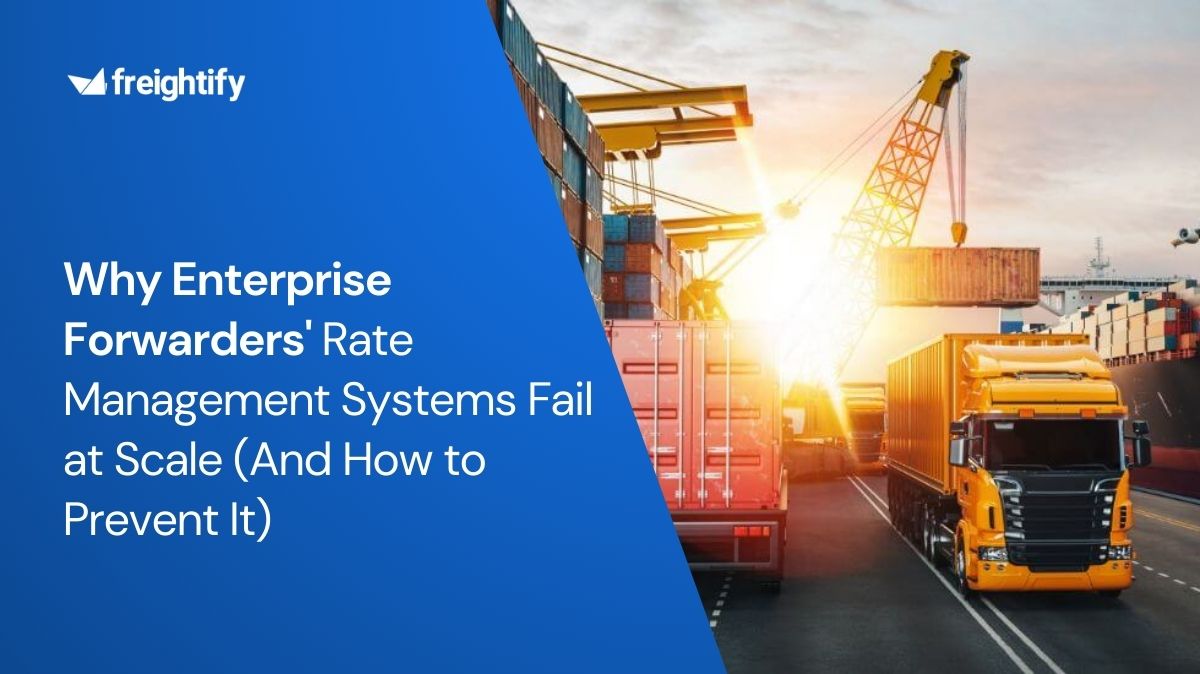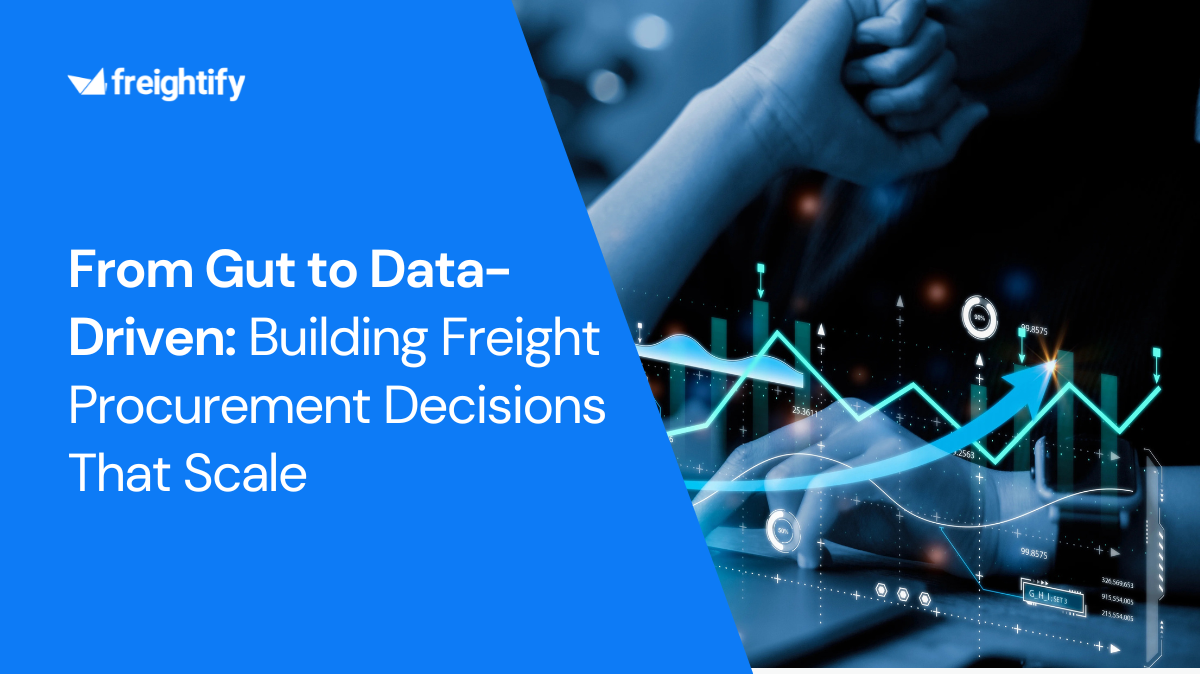It is common to find mentions in sectoral environments of "visibility" and "transparency.” However, not all the companies’ visible data is shared with their partners. This is one of the reasons why greater transparency in supply chains is demanded.
Many suppliers, transporters, freight forwarders, or logistics operators raise doubts about being totally transparent with their customers. Often companies detect deficiencies through this information. However, they prefer to manage problems before the customer realizes them.
On the other hand, many shippers are not comfortable sharing data with their suppliers or vendors. In these cases, there is a concern about intellectual property, financial margins, or security risks. This is understandable since this information allows the situation to be detected and controlled at all times. However, this behaviour can translate into a lack of trust between the different links in the supply chain.
There is no doubt that when there is a collaboration between a supplier and a customer, transparency helps to create trust. When agents can demonstrate that they have the tools and capacity to deal with potential contingencies, they are excellent supply chain partners.
In this way, the visibility and transparency of these partners create an atmosphere of genuine collaboration. Over time, the links in the supply chain learn to complement each other and drive efficient practices for all parties.
Many of the actors in the supply chain already have Big Data tools or systems to monitor their operations. With them, they can collect copious amounts of information and gain visibility into their transactions. Analyzing that data makes it easier to predict, stay ahead of problems, and improve collaboration with your partners.
Let us help you with your journey
Procure, Manage and Quote freight prices (with ancillary charges) in under 2 minutes!
SUPPLY CHAIN AGENTS However, there are still many actors who cannot collect data or give it visibility. They simply don't have enough tools or structure. It is obvious that to solve this situation, it is necessary to go step by step. As individual and local supply chains gain visibility and trust, their models can be integrated into new trends in efficiency and transparency. It is a matter of furthering the relationships between the partners. This will take a step forward in achieving collaborative logistics.
Today, most of the actors involved in the supply chain are familiar with this concept. In reality, many shippers and customers can track their incoming and outgoing shipments or deliveries in real-time. There is even a sea of data thanks to the development of cloud storage technologies, artificial intelligence (AI), machine learning (MLS), the internet of things (IoT), and other technologies such as the blockchain. However, less than 10% of current supply chain data is used effectively.
It is not enough to monitor the data. Proactive and helpful monitoring is achieved when we can make decisions through that data. Data analytics systems are in full development, but they are still imprecise. It takes an effort to address both planned and unplanned situations and execute accurate decisions. Currently, these systems are capable of making decisions to expedite a shipment or to find alternative routes. By analyzing data from past and current operations, companies can make reasonable predictions to optimize existing functions in the supply chain and avoid predictable risks.
INTEGRABLE ASPECTS Some of the aspects that are part of the supply chain present available data. It is really about making an effort to integrate them. Some of these aspects are discussed below.
Flow of goods Most modern operators have constant data monitoring systems, for example, from transportation management systems (TMS), resource planning solutions (ERP), warehouse management systems (WMS), partner networks, and many other sources. The aggregation and integration of this disparate data can be used to address a wide range of problems across different facets of the supply chain.
Route planning Transportation departments generate perfectly planned routes. The objectives are to optimize times, save fuel, achieve JIT shipments, manage full loads, optimize service hours, driving and rest times, avoid empty returns, and other aspects. The management of this data can be used in collaborative logistics.
Performance of operations Optimizing global supply chains is very complex. Typically, manufacturers are influenced by manufacturers, who monitor their internal assets, operations, and suppliers and identify areas for improvement or cost savings. The operations of third-party agents that must move in a coordinated manner, such as carriers, warehousing, customs managers, legalization agents, insurers, etc., also influence. Data management is a valuable tool for performance monitoring. The optimum of each link does not always lead to the optimum of the global chain.
Risk management Tracking data management makes it easy to identify potential risks. The visibility of this data also helps to plan corrective and preventive actions. They are essential to avoid delays or inappropriate practices. In supply chains, tracking data enables future shipments to be planned based on the results obtained from monitoring past shipments. Similarly, manufacturers and service providers can plan their operations based on monitoring histories.
Sustainability The environmental management of companies or their impacts extend beyond their facilities. Most of the aspects that contribute to the carbon footprint are related to the movement of consumer products. The visibility and monitoring of the data allow you to make ethical and sustainable decisions for your business practices. Also, they must be taken into account in the search for partners, suppliers, and the rest of the agents involved in the supply chain. It is convenient to generate positive corporate visibility of its brand, its clients, and society.
Automation Artificial intelligence, machine learning, IoT, or blockchain tools, allow organizations to improve drastically. Adequate data analysis corresponds to greater rigor in determining demand forecasts. Analyzing market trends, sales, shipping information, and other factors leads to accurate predictions and decision-making. Autonomous learning systems require large volumes of data.
Continuous improvement Thanks to quality management, this look has already become a classic. Supply chain professionals have vast amounts of data at their disposal. Daily, they are used to solving quality-related challenges or problems. What is not measured cannot be improved. Therefore, sharing with supply chain partners will be a guarantee to finding solutions to new challenges.
VISIBILITY AND TRANSPARENCY It is important to note that unlocking the full potential of data requires transparency. Visibility of some data is not enough. Improvements won't happen overnight. Take the time to understand where the supply chain improvement opportunities lie.
The importance of starting to address small opportunities is vital. Working step by step is the most reasonable thing to do. If a company manages its problems, applying data analysis to small projects, it will grow in global monitoring.
Large-scale data management is essential: each agent involved in the supply chain must be aware of teamwork. Every plant operation, every management, every transshipment or mode change is critical. Using data to identify these critical areas can only translate into opportunities for improvement. A complete solution like Freightify can be a game-changer for organizations that want to keep track of every detail of their operations.
What we yearn for today as end-to-end visibility or tracking is probably a goal that is never achieved. The first step is internal visibility and integration with vendor visibility. Later, it will be necessary to integrate the visibility of the rest of the agents. The challenge will be different for each company, as the factors will depend on the local practices of each site. The important thing is that the visibility of the shared data will allow companies to identify the critical areas and anticipate the risks of each supply chain.
FAQ What is logistic visibility? Logistic visibility is defined as the ability to see detailed information about the process in the supply chain and logistics. Logistics visibility tracks the information of the product and operational process in real-time. Logistic visibility in the supply chain is used to track the location of goods and plan, schedule, manage, optimize the logistic processes.
What is transparency in supply chain coordination? Supply chain transparency is defined as the business process which looks out the information supply chain process supply chain, from product to customer end process. Supply chain transparency includes the information about quality, safety, ethics, environmental impacts, suppliers, customers, product, operation.
How do shipping containers get tracked? Shipping holders are tracked by global positioning systems (GPS). They attach tracking bias to every vessel on the ship. The tracking device is connected to the unique gateway on the ship. Data from the gateway is transferred to the IT central of the ship through a satellite network.
What Are Some Supply Chain Risks? There are two types of risk that disrupt the supply chain
External Supply Chain Risks
Demand Risks Supply Risks Environmental Risks Business Risks Internal Supply Chain Risks
Manufacturing Risks Business Risks Planning and Control Risks Mitigation and Contingency Risks What is transparency and traceability technology? Transparency refers to the collection of information and data collection, storage, calculation, validation, and sharing. It requires data from internal sources to capture the information, as well as data from suppliers, third parties and audits.
Traceability refers to capturing the information of detailed data related to the products, purchase order process and other operational information. The information of the traceability helps to reduce the cost and time.


















